Monthly Archives: July 2016
Landlord Liability When a Tenant’s Dog Bites Someone

There’s an old saying in journalism: When a dog bites a man, that is nothing new, but when a man bites a dog, that is certainly news!
If you’re a landlord, however, and your tenant’s dog bit someone, it’s newsworthy to you. You need to know whether you’ll be held responsible.
Like most landlord-tenant issues, the answer to what happens when your tenant’s dog bites someone is that it depends, and the answer can vary by state as well.
This post will go through some scenarios to help you determine what could happen if your tenant’s dog bit someone. Please know that these are just hypothetical situations and should not be taken as legal advice. But first …
The Importance of Renter’s Insurance
If you require your tenants to carry renter’s insurance, you most likely won’t need to worry about being sued if your tenant’s dog bites someone. The tenant’s renter’s insurance will cover that.
Renter’s insurance protects you if your tenant’s dog bites someone.
The exception is if the injuries to the bite victim are so extensive that they go beyond what the renter’s insurance covers, and that doesn’t happen too often. Even if you are sued for the balance, there needs to be a case against you.
The rest of the scenarios we’ll cover will be focused on tenants who do not have renter’s insurance.
Sample Lease Clause
REQUIRED RENTAL INSURANCE. Landlord, Owner, or Manager does not maintain insurance to cover the personal property of Tenant(s) or personal injury to Tenant(s), their guests or occupants. Tenant(s) is required to obtain rental insurance in the amount of $300,000 public liability and $50,000 property damage from whatever cause to his person or property and to the person or property of those on the premises with his consent, and Tenant(s) shall indemnify and hold all other parties harmless from all claims arising from any such injury or damage throughout the term of the tenancy. Tenant(s) is responsible to obtain insurance within seven (7) days of residing on the Premises. Should any injury or damage occur within the first seven (7) days or prior to obtaining rental insurance, Tenant(s) shall indemnify and hold all other parties harmless from all claims arising from any such injury or damage.
Dog Bites: The Good News
In most cases, you are not responsible if your tenant’s dog bit someone. So breathe a huge sigh of relief.
In most cases, you are not responsible if your tenant’s dog bit someone.
You are also not responsible if you know there’s a dangerous dog on the property, but you can’t do anything about it. This could happen if you buy investment property that’s already occupied by a tenant who has a lease. As soon as the lease comes under your control, however, you need to correct the situation.
Dog Bites: The Bad News
There are some other instances where you could be held responsible if your tenant’s dog bit someone.
Scenario 1: You knew the dog was dangerous
Let’s say that when you interviewed a potential tenant, they had their dog with them. The dog was big, bared its teeth at you, and lunged at you. When you asked the potential tenant what’s up with the dog, they were honest and let you know that the dog had bitten someone before. They then explained that this is their guard dog.
You consider the story, and you like the tenant (who passed your background check). So you decide to rent to this person and allow the dog, even knowing the dog is dangerous.
In this case, if the dog bites a visitor to the property or bites someone in the common area, you could be held responsible for the injuries. Why? Because you knew the dog was dangerous and let the dog live on your property anyway. Some courts consider landlords who knowingly rent to people with dangerous dogs irresponsible and negligent.
Scenario 2: You didn’t enforce your own lease
You might not allow dogs in your rental unit, and you have a provision in the lease that states this policy. That is not enough to protect you if you don’t enforce your no-dog policy.
Let’s say that you know that your tenant is keeping a dangerous dog on the property — a direct lease violation. You’ve seen the dog when you stopped by for a maintenance call. The dog was chained outside and barked ferociously at you. Yet, you did nothing. You might be held responsible if that dog were to bite someone.
Scenario 3: You take care of the dog
You live on one side of a duplex and rent out the other side. You struck an arrangement with your tenant that you’ll take care of their dog when they need to go out of town for work. The dog bites someone while it was under your care. In this case, you would be considered an owner and would probably be held responsible.

Scenario 4: You didn’t fix the gate
Let’s say that you rented your property to a dog owner.
You have a fenced-in yard that you use as a selling point in your rental ad, even. But now the gate is broken and no longer latches.
The tenant let you know immediately and is concerned because the dog keeps getting out, and this dog is a pit bull who has a history of attacking other dogs. You plan to get around to fixing the gate, but the dog bit someone before you fixed it. You could be held responsible.
Scenario 5: Some people sue even when they have no case
People can and do try to sue for anything and everything, but that doesn’t mean they have a case. For example, if your tenant’s dog bites someone while your tenant is away from the property with their dog, you would almost never be responsible. However, if you know that your tenant keeps a dangerous dog on your property, and you know that the dog roams the neighborhood all the time, a court might find you responsible if that dog injures someone.
Take Precautions
If you allow dogs at your rental property, take the necessary steps to help ensure guests to the property and neighbors are safe. If you know the dog is dangerous, don’t let your tenant keep it if you have control of the situation.
Nolo has a fantastic list of historical cases regarding landlord liability for dog bites. If you want to see how judges have ruled in the past, check them out.
You may also want to suggest or require that your tenant carry renter’s insurance, and make sure that you have adequate liability coverage from your landlord insurance policy … just in case.
credit to Laura Agadoni
Laura Agadoni is a landlord and journalist whose articles appear in various publications such as Trulia, The Houston Chronicle, The Motley Fool, SFGate, Zacks, The Penny Hoarder and azcentral.

A CUT ABOVE THE REST
Top 10 Pain Points for Landlords and How to Fix Them
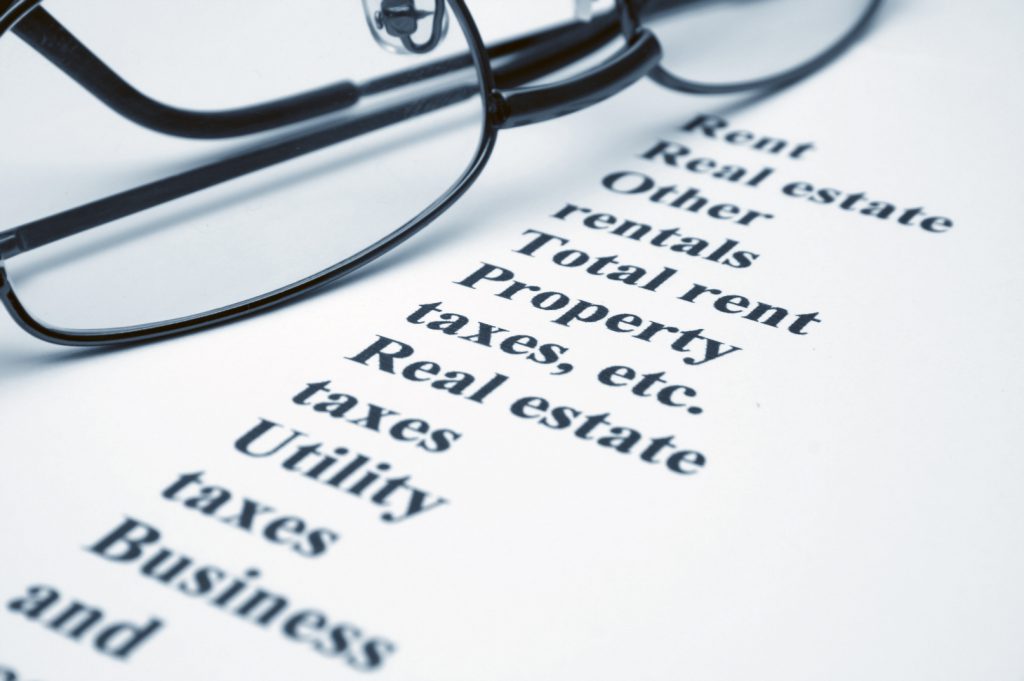
Being a landlord can be incredibly profitable, but also very difficult at times.
I don’t know about you, but my properties aren’t exactly on Easy Street.
Over the last 10 years, I’ve experienced many of the issues that plague owners, and cast fear into the hearts of wanna-be landlords.
Through endless reading, trial and error, and tenant feedback, I’ve learned that almost every rental problem has a solution.
Based on my experience, here are the top 10 pain points that most landlords will eventually experience, along with ways to fix or prevent them.
1. Loss of Rent/Income
- Vacancy
- Rent Default (Tenant Stops Paying)
- Tenant Hold-over (Tenant Won’t Leave and Won’t Pay Rent)
Solutions:
- To reduce vacancy, start listing your units for rent 60 days prior to the end of the current lease.
- Screen your tenants better – make sure you don’t let a deadbeat or a scammer into your property.
- Terminate the lease immediately for nonpayment – with proper notice for your state, of course.
- Learn about your local eviction process, and be ready to file the paperwork immediately after lease termination.
2. Eviction
- Court Costs of Eviction
- Strict Legal Rules for Eviction
- Tenant Retaliation by Damaging the Property
Solutions:
- Require a large security deposit (1-2 month’s worth of rent, depending on what is allowed in your state) at the beginning of the lease to alleviate potential expenses of court costs and damages.
- Learn about your local eviction process, and be ready to file the paperwork immediately after lease termination.
- Include a clause in your lease that mandates court costs and attorney’s fees be paid by the prevailing party.
3. Stress of Property Management
- Cleanliness of Tenants
- Unintentional/Intentional Destruction of Property
- Illegal Drug Use
- Lawsuits
- Chasing Down/Collecting Rent
- Tenants Lying to You
- Noise and Nuisance Complaints
- Dealing with Disgruntled Neighbors of Your Rental
- Police/Domestic Violence Issues
- Ensuring Tenant Satisfaction
- Ensuring an Unbiased and Fair Screening Process
Solutions:
- Find a rock-solid lease and stick to it.
- Stop by or drive by the property at least once a month.
- List the tenant’s cleaning responsibilities in the lease.
- Put everything in writing (or email).
- Ask the neighbors to call you first, whenever there is an issue.
- Don’t be afraid to call the police.
- Find a local landlord-tenant lawyer and build a friendship with him or her, before you actually need an attorney.
- Use an automated tool, such as Cozy, to accept applications, screen tenants, and collect rent online.

4. Stress on Personal Life/Relationships
- Spouse or Partner Worried About Finances
- Always Being On-call for Rental Issues
Solutions:
- Include your spouse or partner in the financial decisions and respect their opinion.
- Keep a three- to six-month emergency (or vacancy) fund for each property. Yes, it takes a while to build that up, but you’ll sleep better.
- Ask your tenants to report issues via email or text, which only takes a second to review. If it’s urgent, you can deal with it immediately.
5. Tenant Turnover
- Trying to Find a New Tenant
- Cleaning up After a Previous Tenant
- Feeling of Rejection When Prospective Renters Don’t Want to Rent Your Place
- Exhaustion from Showing a Unit Week After Week
- Handling, Storing and Disposing of Abandoned Personal Property
Solutions:
- When looking for new tenants start early, while the unit is still occupied.
- List your units for rent 60 days prior to the end of the current lease.
- Refresh your listing on Craigslist every three to five days.
- Don’t sweat the clean-up, just hire a maid service and deduct the cost from the deposit (excluding normal wear and tear).
- Schedule showings back-to-back, every 30 minutes, in a four-hour block on a Saturday. I call this “The Landlord’s Open House.”
6. Repairs
- Knowing When to Do It Yourself and When to Hire a Pro
- Finding and Evaluating Qualified Contractors
Solutions:
- Create a handy tool bucket that you can keep in your trunk.
- Your rentals will provide great opportunities to learn basic handyman skills, but don’t get in over your head. I’ve made small leaks much worse because I didn’t know what I was doing.
- Buy an all-purpose DIY book, and skim through it regularly. Keep it in your car, so you always have it nearby.
- Ask to observe every service professional that comes to your property. You’ll learn a lot through observation.
- Research contractors on Angie’s List, Handy (formerly Handybook), Yelp, and the Better Business Bureau.
7. Compliance with Laws
- Obtaining Business Licenses and/or Landlord Registration
- Understanding Landlord-Tenant State Laws
- Knowing Landlord vs. Tenant Rights
Solutions:
- Don’t try to circumvent the government. You may get away with it for a while, but eventually it will catch up to you.
- Learn your state’s rental laws.
- Join a local landlord association, rental housing association, or real estate investor association to network with other landlords.
- Attend landlord training in your city. Landlordology provides free guides and occasional online webinars. Join our newsletter to stay in the loop.
8. Adequate Insurance
- Insuring Each Property
- Insuring Against Rental Income Loss and Lawsuits
- Insuring Your Portfolio
Solutions:
- You might get a better rate if you insure all your properties with a single provider.
- Inform your provider that your properties are rentals, and not homeowner occupied (critical!).
- Sign up for “Fair Rental Income Protection” in your policy to cover the rent during a covered loss.
- Make sure you have proper coverage.
- Consider getting “umbrella” insurance to cover excess liability and risk not covered by the individual policies. An umbrella policy will insure your entire portfolio, not just your properties.
9. Leases
- Finding a State-compliant and Bullet-proof Lease
- Explaining Lease Clauses to Tenants
- Knowing Whether or Not Your Lease Will Hold up in Court
Solutions:
- Use a premium, state-specific lease that has been reviewed by lawyers. It’s worth the investment. Check our toolbox for suggestions.
- Don’t ever use a “free lease” that you find on the internet. It could cost you thousands in lawsuits.
- Review your state laws for any required or prohibited clauses.
- Review the entire lease with the applications before signing.
- Use online document signing tools, like SignNow, HelloSign, and Docusign, to digitally sign leases remotely.
10. Finances
- Keeping Track of Security Deposits
- Calculating Interest on Deposits
- Commingling Funds
Solutions:
- Keep the security deposit in a separate, interest-bearing bank account.
- Open a separate security deposit bank account for each property.
- Collect and give interest on the deposit money if you are required to by law. If the statutes don’t regulate interest, just give the tenant all the interest that is accrued.
BONUS: Taxes
- Keeping Track of Income and Expenses
- Calculating Depreciation
- Sending out 1099s to Contractors
- Deciding to DIY or hire a CPA
Solutions:
- Use an all-in-one property management software that lets you track income and expenses. If not, there are other great tools, like Freshbooks, Excel, and Quickbooks.
- Property Managers (not landlords) who pay a contractor more than $600 in a given year, must send out 1099s. Some tools like, Buildium and Appfolio can make this task easier.
- TurboTax can easily prepare and file the taxes for most small landlords. If you have multiple business entities, joint ownership, or tax shelters, then you should probably hire a CPA.
Credit to Lucas Hall
Lucas is the Chief Landlordologist at Cozy. He has been a successful landlord for over 10 years, with dozens of happy tenants and a profitable income property portfolio.

Are You Addicted to Your Phone?
If you’re tied to your phone all day and night, try these strategies for untethering yourself—even for a little while.

Maria Azuaje admits that she can’t be without her phone. “I tried to turn it off at 8 p.m., but I have never been able to. I’m addicted, completely,” says Azuaje, a sales associate with Berkshire Hathaway HomeServices Florida Properties Group in Miami.
If you take your phone to bed with you, can’t manage not to peek at it even when you’re with a client, and use it to scan social media whenever you have a minute of downtime, you’re probably addicted to your phone. But what if it starts to affect your business—or your life? Here are some tips to keep your addiction in check:
Shut it down during one activity each day.
Pick a time when you do something routine—eat dinner with family, play with your kids, or take a relaxing bath—and turn your phone off during it. After spending some uninterrupted time focusing on an activity, you might feel refreshed. If you’re really serious about ungluing yourself from your phone, pick a time each night to turn it off until morning. You’ll probably get better sleep.
Turn off the vibrate function.
You probably put your phone on silent when you’re with a client, but you might leave it on vibrate mode. Even when it vibrates, you instinctually reach for your phone, and you don’t want that distraction when you’re conducting business and it sends the wrong message to the person you’re meeting with. Turn the vibrate mode off, put it on silent, and put your phone away when a client needs your full attention.
Disable notifications.
Between Facebook, Twitter, Instagram, and every other app you have on your phone, you could get a new notification of activity every minute. Turn notifications off on your phone so you don’t feel compelled to keep up with every alert.
Create a social media hour.
Set aside an hour each day to focus solely on your social media channels. Even if it’s just to scroll through feeds on your phone for fun, put a time limit on it.
Hire an administrative assistant.
Let this person be the first point of contact for new clients so you’re not constantly fielding phone calls. You can also forward calls from your cell to your assistant during times when you need to minimize distraction. This approach provides callers with immediate attention without interrupting you.
Solar Power: 9 Crucial Steps To Prepare Your Home
Solar power is a booming industry in the United States. Photovoltaic (PV) solar panels are still expensive, trends in production efficiency and cost of materials point to a continued drop in the price of PV units that could make the technology accessible to middle-class incomes within a decade.
9 Crucial Steps to Prepare For Solar Power
Whether you’re chomping at the bit to add some solar units to your roof or simply investigating the scope of the process, there’s plenty to be done in preparation for the shift to solar. Here are 9 crucial steps to prepare for solar power at your home.
Step 1: Consider Your Options
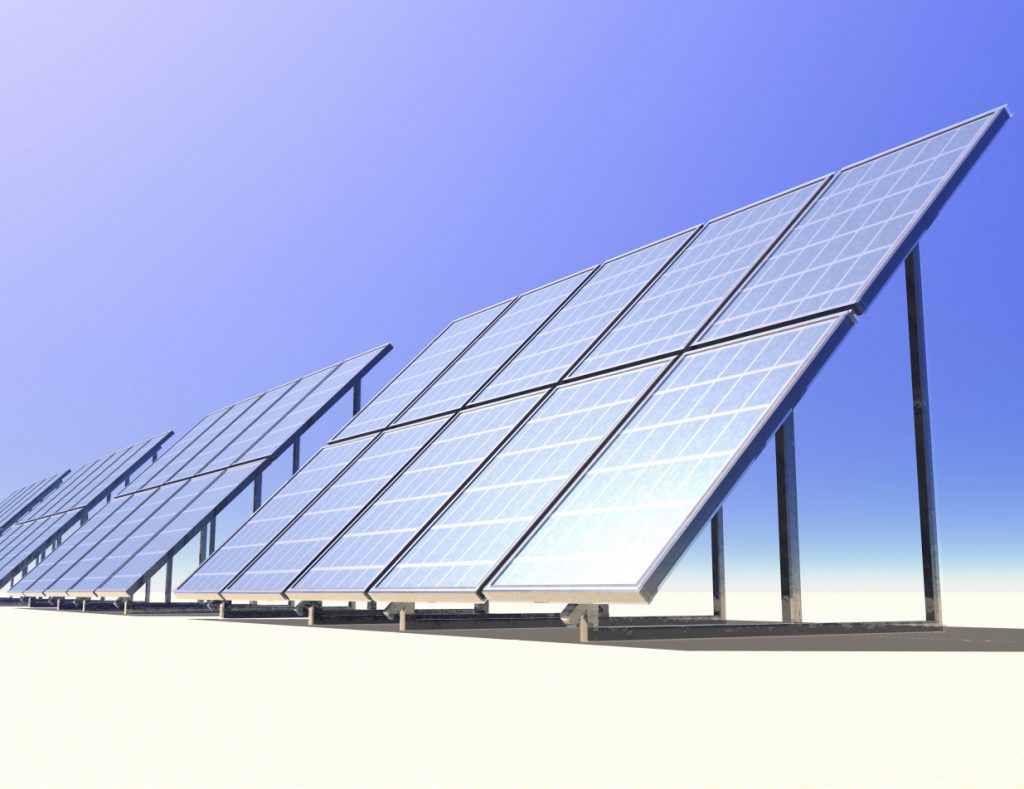
Solar energy is rising in popularity as prices continue to drop, leading to greater competition among solar contractors, installers, and manufacturers alike. Because of this, there have never been more opportunities available to consumers when it comes to solar energy.
The list of solar panel manufacturers continues to grow as parts and materials become cheaper, but speaking with a solar energy contractor about the specific goals for your solar energy plan can help determine the scope and costs of your project going forward.
Because you’ll need help from building inspectors and the power company in your community, it is advised that you consult with your local resources and find a solar installer that has experience in permitting and project management to ensure the process goes smoothly. Homeowners looking to implement solar power should order a cost/benefit analysis survey from a certified solar installer. This survey will identify roof slope, property orientation, shading, optimal placement sites, power distribution and storage (if applicable), and finally, aesthetic considerations.
Step 2: Find Rebates and Incentives
Depending on your geographic location, your local public works department or utility company may offer impressive rebates on the purchase costs or installation of solar panels on your property. A full list is available here, complete with breakdowns of individual solar energy rebate programs by state.
In some instances, such as in Texas, some utility companies will pay as much as 45% of the initial cost of installation – a huge motivating factor for homeowners, especially taking into account the additional 30% write-off at the end of tax season.
Step 3: Secure Financing
Under the Consolidated Appropriations Act of December 2015, the federal government will provide a 30% tax credit to homeowners for qualified expenditures toward a PV system. In order to secure the full credit, systems must be placed into service by 12/31/2019. The same rebates are available to businesses operating within the United States.
The U.S. Department of Energy, the U.S. Small Business Administration, and various other federal agencies offer loan programs for both homeowners and businesses seeking to invest in solar power. Compared to a conventional mortgage or residential energy efficiency improvement loan from Fannie Mae or Freddie Mac, securing a loan for energy improvements through the SBA can more than double the maximum loan amount available – up to $750,000.
As far as the costs of the panels themselves, the average cost per watt generated reached less than $0.74 in 2013, but in areas such as Massachusetts, Louisiana, and California, the payback period (or the return on investment) is fewer than 10 years.
Step 4: Make the Necessary Repairs and Upgrades
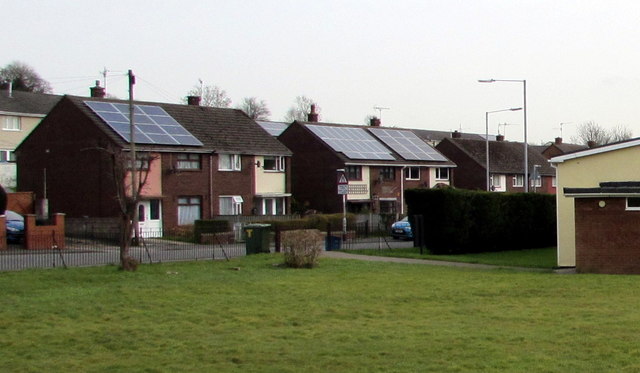
In order to prepare your property for solar panel installation, you’ll need to consult with a building inspector to ensure your roof is structurally sound and capable of housing heavy solar arrays.
Due to the weight and surface area utilized when installing solar arrays on a residential rooftop, it’s important to first check the condition of your roofing materials before committing to a solar solution. Because any repairs made to the roof after installation will require complete removal of the solar panels, it’s wise to order roofing repairs or replacement in advance of adopting solar energy systems into your home’s energy profile. While these upgrades may not be as invasive as an indoor home remodel project, the scope and technical nature of the project may require additional prep work before contractors can get started.
Most PV panels are mounted on south-facing roofs, but roofs with east-west orientations or flat-roofs are acceptable, as installers can position the arrays at optimal angles to maximize exposure to sunlight.
In preparation for installation, consider building a separate utility nook or storage cabinet to house a battery, electrical inverters, and Balance of System (BOS) equipment to integrate the solar modules for use with the home’s existing electrical system. Because solar energy is becoming increasingly affordable, more and more companies are expected to enter the market, bringing new and exciting products and solutions for energy-conscious homeowners. The frontrunner in this department is Tesla’s Powerwall, which will provide 6.4 kWh of home energy storage capacity when consumer models ship in 2017. Designed for use with solar panels, the Powerwall allows homeowners to actively capture solar energy for later use or sell the excess energy back to the grid.
Step 5: Permitting and Rebate Process
Most city utility companies require the following documentation before installation can begin:
- Level 1 Interconnection Application and Agreement for inverter-based generating systems
- Electrical diagram of proposed generating system
- Specifications of inverter
- Application for electrical service (required for use with meters and various state/local production incentive programs)
A qualified solar installer or contractor should have these documents prepared or available to you upon request.
Furthermore, the solar contractor must obtain an electrical permit prior to installation. Your local building or planning department will require an electrical inspection before replacing your old meter with a reverse-power meter.
After installing and implementing a solar energy solution in your home, you should be eligible to receive as much as a 30% credit on your federal income tax bill. Through December 2016, homeowners who invest in an energy efficiency solution will be able to complete IRS Form 5695 – Residential Energy Credits. According to the instructions for the form, qualified applications of the tax credit are for costs related to the following:
“Qualified solar electric property costs are costs for property that uses solar energy to generate electricity for use in your home located in the United States. No costs relating to a solar panel or other property installed as a roof (or portion thereof) will fail to qualify solely because the property constitutes a structural component of the structure on which it is installed. The home does not have to be your main home.”
Your state and local governments, utility companies, and energy efficiency coalitions may offer additional grants, credits, and rebates toward the adoption of solar power in your home. For a complete list of the possible benefits, check the Database of State Incentives for Renewables and Efficiency.
Step 6: Investigate Buyback/Energy Storage Solutions
If you plan to help offset the cost of your solar energy system by selling excess generated power back to the grid, you’ll need a production meter installed and configured by your local electric company.
A production meter measures the amount of electricity generated by an energy source, operating essentially opposite of your standard utility metering system. Production meters connect to your system via the AC disconnect on your solar inverter before passing through the main interconnection breaker on your property.
Utility companies commonly read production meters at the same rate by which they monitor standard meters, sending the homeowner an annual report with information pertaining to the kilowatt-hours produced by your solar energy system. Using that data, you’ll need to complete a yearly application for compensation for excess energy your system provided for the grid. Incentives arrive either in the form of service credits or check by mail.
Among the first consumer-grade electrical storage system was Tesla Motor’s Powerwall, which actively captures and stores solar-generated energy for backup use or daily electrical needs. While other companies are following suit and producing low-cost, high-capacity batteries for solar-powered buildings, Tesla is considered the leader in the still gestating industry. The company estimates each unit will perform at 92% round-trip DC efficiency and initial models will store 7 kWh (about 1/3 the average daily energy used per American household as of 2014). Because residential electrical systems operate on AC power, a converter will be necessary in order to utilize the energy stored by the Powerwall.
Step 7: Finalize Power Efficiency Solutions
As with most energy-efficiency upgrades, adding solar power to your home will only work to maximum efficiency if other aspects of your home are working in concert with your new system.
Some low-impact, DIY projects to put on your list:
- Check each door and window for broken or cracked seals.
- Add a layer of protective window film to further improve energy efficiency indoors.
- Replace your old bulbs with high-efficiency CFL or LEDs.
- Install energy-saving smart thermostats.
- Order a rain barrel to collect excess rainwater for later use.
- Replace air filters in air conditioning and heating systems, vents, and appliances.
- Invest in energy-smart power strips and timers for electronics.
- Add additional insulation to problem or leaky rooms.
- Check your roof and attic for leaks or install ventilation systems to prevent capturing hot air.
Once again, a home energy audit from an energy-efficiency professional will be the best way to analyze and assess the strengths and weaknesses in your home’s energy efficiency standards.
Step 8: Installation and Implementation
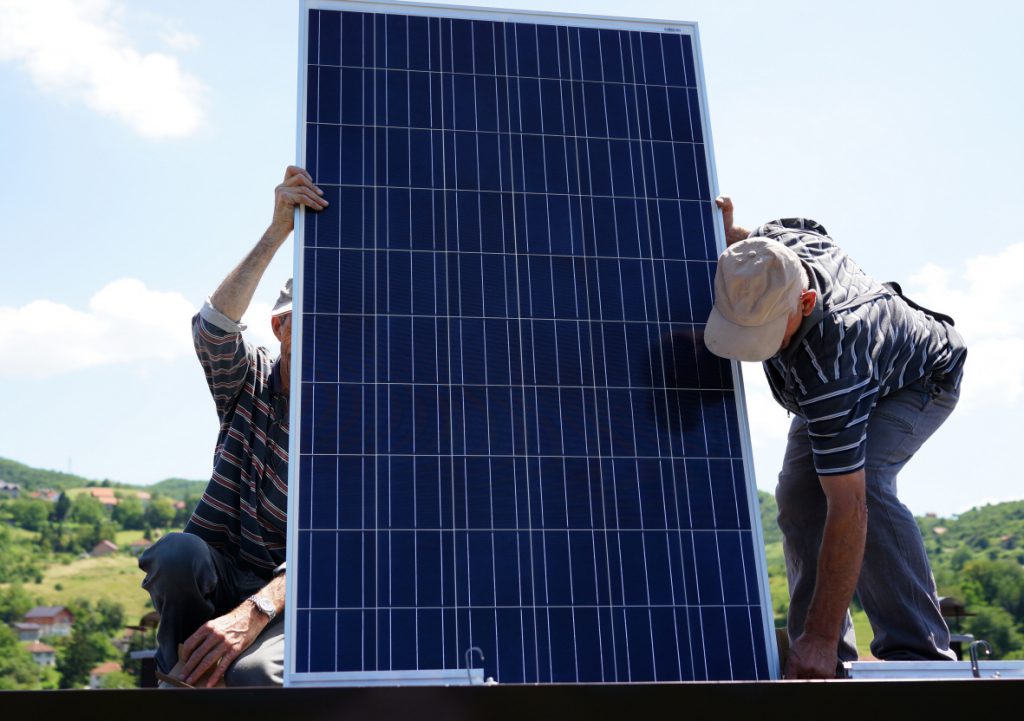
Before installation, your solar energy contractor will assess the following:
- Viability of available solar resources.
- Size of system necessary to meet your home’s average electrical requirements.
- Ideal placement of control system and electrical infrastructure
- Potential for connection to grid or potential for off-the-grid use.
- Safety and reliability standards.
While it’s not unheard of homeowners installing solar electric systems on their own, it’s highly recommended (and sometimes, depending on your location and system of choice, required) that you hire a professional solar installer to oversee the entire project.
When choosing a contractor for your solar power system, consider the following:
- Request separate bids for roof-mounted systems and ground-installed PV solutions.
- Inquire as to the level of experience of the contractor in question. How many solar energy systems have they installed? How often?
- Ask for proof of certification or licensing. Your state’s licensing board should have information regarding each licensed contractor in the industry.
- Check for disciplinary actions or pending complaints against the contractor. The Better Business Bureau and your city government should have information regarding any pending liens or judgments against a company.
- Ask for energy/cost estimates based on the solar resource of each prospective installation site, size/scale of the system, type of PV panels intended for use, and the current conditions of your home’s existing energy efficiency solutions.
Unless your solar electric solution is part of a new, energy-efficient home construction project, chances are you’ll also need a licensed electrician to install and verify a few secondary but critical aspects of your new energy system. Both stand-alone and grid-connected solar energy systems require power conditioning equipment that must be implemented within your home alongside your new PV panels and batteries. For reasons that should be clear, it’s never a good idea to leave electrical work to a handyman or a DIY project. The current requirements for grid-interactive power inverters, known as UL 1741, should serve as a reference point for solar contractors moving forward.
Safety Considerations
Every electrical system is at risk of failure, damage, and deadly surges that must be addressed on a system-by-system basis. According to the National Fire Protection Association and its updated National Electrical Code, renewable solar energy systems should implement the following to ensure safe and continued operation:
- Safety disconnects to protect internal system wiring, allow for safe repairs, and ensure isolation from the grid.
- Grounding equipment that provides a safe, low-resistance path for errand surges, lightning strikes, and equipment malfunctions to discharge into the ground.
- Surge protection equipment to protect electrical gear against lightning strikes and electrical storms.
Step 9: Testing and Analysis
There are several ways to evaluate the efficacy and reliability of your system. First, built-in meters and instruments on your solar control or energy monitoring panels should provide enough information about energy usage, current storage levels, rate of energy generation, and amount of converted energy to date.
Some solar energy systems provide connectivity to third-party smartphone monitoring apps and provide better visual representations of data collected within your home over longer periods of time. Other gadgets such as Nest work seamlessly with modern energy systems, helping to better use and conserve energy, reducing the amount of maintenance required by the homeowner in order to reach maximum efficiency.
Finally, in order to fully understand and appreciate the effectiveness of your solar energy system, you’ll want to keep your old utility bills from the previous year and measure year-to-year comparisons once you’ve had your system operational for a full year. Ordering a home energy audit after installation of your solar energy system will also provide valuable feedback on methods to further improve your home’s efficiency capabilities headed into the next several decades.
The benefits of solar power are clear and costs continue to fall. Is your home prepared for the future of energy? Find a solar installer in your area by visiting the North American Board of Certified Energy Practitioners and begin your journey to true energy independence today.
A Long Term Investment
One final note — choosing solar power for your home is a long term investment. Review.com, a website dedicated to conducting unbiased and in-depth research about products and services, spent six weeks researching 188 contenders, consulting engineers and solar energy experts, and scouring user reviews and publications. They analyzed and compared the following;
- Watts of power
- Efficiency ratings
- Customer service
- Age of the companies
Ultimately, their research culminated in the recommendation of five solar panel companies. In addition to those recommendations there is also a tremendous amount of information to soak up.

newstarrealty.com
10 Unconventional Tips To Help Minimize Home Allergies
If you’ve ever experienced coughing, sneezing, itchy eyes, a runny nose, a scratchy throat, rashes, hives, low blood pressure, breathing trouble or an asthma attack, allergies could be to blame. So is there a way to minimize home allergies? Absolutely but let’s first take a look at the magnitude of the problem.
- According to the Allergy and Asthma Foundation of America (AAFA), over fifty million Americans suffer from allergies today, including 30 percent of adults and 40 percent of children.
- Allergies are among the country’s most common, yet often overlooked, diseases. Since there is no cure for allergies, prevention is key.
10 tips to minimize home allergies
While many people only concern themselves with certain times of the year, for others, “allergy season” is a year-round, dismal reality since allergens can be found indoors and outdoors. Reducing allergens in your home is a great first step towards prevention and optimal health. Your home should be a safe haven where you rest, rejuvenate and recuperate from daily stress and toxic exposures – but what you can’t see – can hurt you. Your home may, in fact, be harboring a broad range of allergy triggers.
From insects and furry companions to toxic, synthetic fragrances in cleaners, air fresheners and candles, it may be difficult to identify the exact source in the home causing your unwanted allergy symptoms. Why not prevent allergens from entering the home in the first place rather than treating or masking allergy symptoms? Awareness and simple action steps can result in profound changes for both your home and your health.
Here are 10 tips to minimize home allergies:
1.) Reduce clutter
Go on a paper cleanse and say sayonara to unwanted piles of papers, books and magazines lurking in your bedroom, under your bed or in your home office. Keep only what you need, and recycle the rest. The same applies to cluttered shelves, cabinets and closets, which can be breeding grounds for insects, mold, rodents and their droppings. You’re home will not only look better, you’ll feel better, too.
2.) Change the filters
Since biological contaminants like dust and dirt permeating your home’s air can’t be always be seen, it’s often overlooked. Be sure you are changing the furnace filter for your HVAC (heating and cooling) system every season; or every three months per the EPA’s recommendation. A high performance filter will capture over 95 percent of large airborne allergens such as mold spores, pollen, and dust mite debris from the air passing through it. Not only do these filters help maintain better airflow to reach your desired temperature, but will also reduce energy use resulting in savings on your bill.
3.) Wash linens naturally
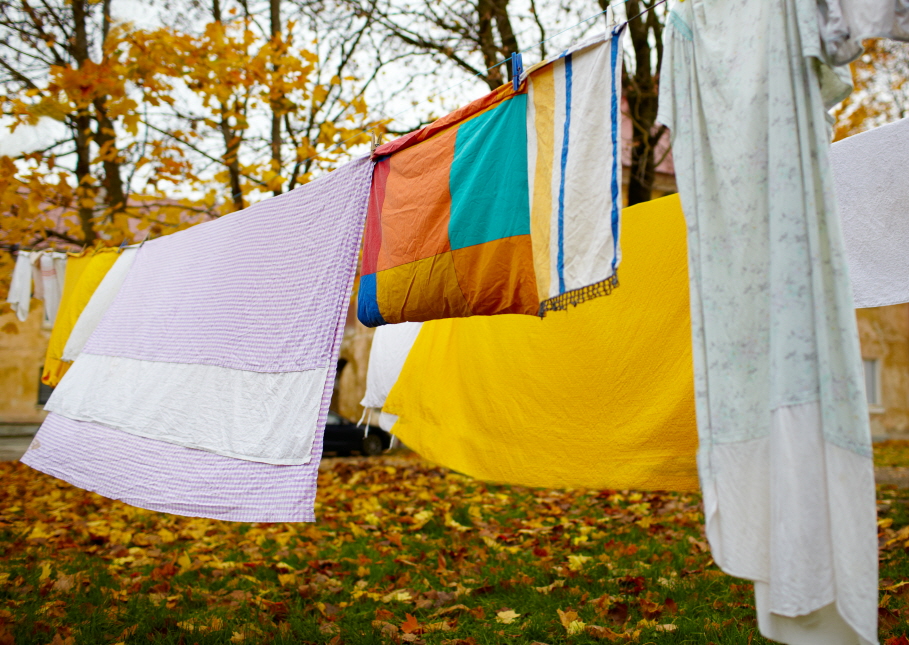
Are you washing your bed linens in HOT water every two weeks (or more)? If not, your beloved bed is likely home to millions of dust mites – ewww! Be sure to wash your sheets and pillowcases in at least 140 degrees (Fahrenheit) to kill those nasty dust mites. You should also be seasonally washing your curtains, comforter, area rugs and duvets. Be sure to use a nontoxic detergent free of synthetic fragrance, petroleum based solvents and optical brighteners. I also recommend vacuuming the top of your mattress with a HEPA, airtight vacuum hose or handheld device. Also, let the sunlight hit your mattress and open the windows when changing your bedding. The sunlight will kill bacteria and absorb the moisture that creates a perfect breeding ground for dust mites.
4.) Bring the fresh air in

Open the windows during non-allergy season to let your home breathe and allow for better circulation and removal of built up toxins, dust and debris. During allergy season, this isn’t always an option. Instead, place low-pollen plants such as Peace Lilies or Swedish Ivy, throughout the home and out of pets reach. In addition to removing CO2 and creating oxygen, these plants have been shown in studies by NASA to remove several toxic chemicals from the indoor air. Plants can gather dust, so it’s important to clean them regularly.
Also, be sure to keep moisture at bay by using exhaust fans after showering and when cooking to vent out particulates. Keep wet towels off the floor and fully dry them to avoid mold and mildew build up. I recommend a mildew resistant shower curtain such those made from hemp. If you live in a high moisture area, consider implementing a dehumidifier to keep humidity levels below 50 percent.
5.) Snuggle with a mate, not a mite
Since your skin is your largest organ, you want to make sure what you’r sleeping on will prevent unwanted dust mites. In addition to throwing your pillow in the dryer on high heat to kill dust mites (or washing, depending on the material of your pillow), you should definitely use an organic cotton pillow and mattress barrier cover if you have an allergy to dust mites. Avoid plastic barrier covers as these can off-gas dangerous VOC’s (volatile organic compounds) into the air.
6.) Clean greener
In addition to wet mopping and damp dusting to capture accumulated dust, avoid cleaning products that can agitate allergy symptoms. Instead, make your own from ingredients in your kitchen cabinets. A mixture of baking soda and natural dish soap makes a great tub, tile and toilet cleaner; while two parts water to one part white distilled vinegar can be used for streak-free windows and glass surfaces.
7.) Use an air purifier
If you don’t have a whole house air filtration system, then implementing a stand alone room air purifier is a must! A good unit will not only remove airborne allergens, but will also capture dangerous VOC’s, gases and odors from the air your breathe. Place this in your bedroom for optimal effectiveness.
Dyson Pure Cool Link that detects and removes harmful pollutants and allergens in the air down to 0.3 microns. It’s an effective and convenient solution to reduce air pollutants and allergens as they emerge.
8.) Choose allergen friendly fabrics
Allergens could be permeating your bedding and wreaking havoc on your health. Some materials and fabrics are prone to harbor allergens, moisture, bacteria and dust mites. Down, for example, is one such material that should be avoided. It’s highly allergenic and the treatment to animals to create down is downright inhumane. Opt instead for wool which naturally wicks away moisture and acts as a natural flame retardant as well as natural (not synthetic) latex which is inherently dust mite resistant.
9.) Bare it on the floor
While it is warm and cozy underfoot, carpet can harbor all kinds of nasty things. Millions of microorganisms and over 120 nasty chemicals can be found in carpet backing, adhesives and the fibers themselves, as well as stain and water resistant treatments that have been applied to the carpet. Wall to wall carpeting is a no-no, especially in the bedroom and wet areas such as laundry and bathrooms. Choose hard surfaced flooring instead such as cork, FSC-certified hardwood flooring, concrete or ceramic tile. If you’re on a budget, look for linoleum or Marmoleum which is made from linseed oil (not vinyl flooring made from PVC which should be avoided at all costs). Carpet, in particular, harbors allergens and should be cleaned thoroughly with a HEPA vacuum and non-toxic cleaner.
10.) Make it a furry-free zone
We all love our animal companions, and many like them soo much they share the same bed. This can create allergic reactions from pet hair to pet dander. Establish rules from the beginning so your pet sleeps in his or her own (organic) bed. Also, you should shampoo and groom your pet with a nontoxic formula to protect their health (and yours).
Credit to Lisa Beres
Where would you Like to Live?
It’s the Right Time to Sell
4 Ways to a More Honest Sales Relationship
You’ve got the skills prospects are looking for, but to truly connect with them, you have to stop being a salesperson.

What does it take to really connect with someone, to have them feel comfortable with you and truly trust you? Those are the people who will end up your customers for life, and those relationships will open doors to a multiple number of other contacts. But it takes being more than a good salesperson to connect with prospects on that level. Here are four strategies to build a deeper, purer relationship with potential clients.
Connect With Your Client, Not the Other Way Around
Your actions are most natural when you feel relaxed and confident in your own skin, and people can connect to that. But no matter how well trained you are, you’re not in your most natural state when you’re trying to make a sales pitch. Instead of trying to get a prospect to connect with you and your services, sometimes the best way to facilitate actions that are pure is to connect to them first — by listening.
When prospective clients ask me about what I do or how my experience will help them, I usually highlight the most important points of my job, as if I only have 60 seconds with them in an elevator. Then I say, “Before I get into more detail about that, I’d like to explore more about what your goals are.” I always turn it back on them until I have a good understanding of their key needs. Keeping the focus on the client allows you to customize your approach and gives you insight on when to move the conversation forward or back off.
That approach has also helped Lisa Lang, sales associate at Keller Williams Suburban Realty in Livingston, N.J. She says it’s imperative, especially in the beginning of a client relationship, to do more listening than talking. “I need to gain their respect and trust immediately. Otherwise, our relationship will falter,” Lang says. “Listening to them is a must. I have to hear what they have to say and what their needs are, and learn what kind of personality they have. I try to make our first meeting as casual as possible, whether it’s at an open house or at my office.”
Lang lets prospects drive the initial conversation, talking about more than just their real estate needs but also their families, current location, people they are affiliated with, and any common bonds she may share with them. “Once they feel at ease, everything else comes naturally,” she adds. “I never try to be someone I’m not.”
Stop Caring About the End Result
There is a saying I’ve tried to follow that is difficult to understand at first but has tremendous benefits for lasting relationships: “Those who desire nothing possess everything.” Now this doesn’t mean you don’t care for your customers or don’t have goals and dreams. It has to do with getting rid of your personal attachments and working from your true gut; it’s an approach to business and life that’s good not only for your success and peace of mind but also for your customers.
Too much caring and desire for winning get in the way of the performance. Your action is pure and comes naturally without thought. The key is detachment: Don’t think too much about it and just do it. When you don’t care so much about the end result, you can be at ease, and that’s when people feel comfortable around you.
One of my favorite books on this subject is Zen in the Martial Arts by Joe Hyams. Hyams tells a story of training with his sensei, who instructed him to punch a baseball mitt the sensei was wearing. As soon as Hyams got ready to punch, he tensed up. His sensei was aware of his intention, and he moved the mitt before Hyams could strike it.
“Relax,” the sensei said, according to the book. “Stop straining. The less effort, the faster and more powerful you will be.” As soon as Hyams relaxed his body and mind, he hit the target.
His sensei told him, “You stopped caring whether you hit or not. It is the caring or desire which stands in the way of effortless effort. You must stop caring about doing it and just do it — effortlessly and naturally as snow falls from the tree or water bubbles up from the spring.”
Eye Contact Is Powerful
We always hear how important it is to maintain eye contact. When you’re making a point or listening to your customer, it enables you to deliver the message with sincerity or see the truth in your customer’s eyes.
“The essence of the [client] relationship is how the transaction begins,” says Hal Maxwell, president of Coldwell Banker in New Jersey and Rockland County, N.Y. “You must build a relationship with trust and understanding immediately. You do that by eye contact, by being honest, by being who you are, telling people the truth and not just what they want to hear. If you’re sitting across from somebody who bought their home, and they paid at the height of the market, you can’t sugarcoat that. You have to tell them the truth, and you have to have something to show them and back it up.”
The truth may make your client angry, Maxwell says, but the anger isn’t directed at you. But your client’s anger will be about you if you tried to hide the truth. “Three or four months down the road, you come back and tell them that they have to do a major [price] reduction, and then they get mad at you because you didn’t tell them the truth up front.”
Maxwell says his company lives by three rules:
- No commission is worth your reputation.
- Do the right thing.
- When you give your word, you keep your word.
Follow Up
This is the glue that keeps the relationship together. Whether it’s a simple handwritten card thanking the individual for their time and business, or specific actions you take to ensure the long-term success of your client. Following up with a client after the sale is critical so they see that you’re there not just for a commission but to make sure they’re satisfied long with their decision.
This often leads to new business, referrals, testimonials, and a solid reputation. Email and other forms of follow-up are key, but an in-person meeting is the most powerful — where body language, eye contact, and a handshake can make all the difference.
“In this increasingly digital world, where email and texting have become the standard for business communication, the personal connection of a call — and, even better, a meeting — is more powerful than ever,” says Brian Stolar, president and CEO of real estate development firm The Pinnacle Companies. “One good meeting can be vastly more effective for finding a resolution to an issue or accomplishing a goal than dozens of digital messages. In important business relationships, a collaborator who knows that and practices it well and often is appreciated.”
Credit to Barry Farber
Barry Farber is a radio and television host with expertise in sales and marketing topics, as well as a marketing consultant for corporations, professional athletes, and entertainers. His brand of FoldzFlat® Pens can be used as a tool to break the ice with prospects or to follow up with clients along with a handwritten thank-you note.





